The vegetables in your meal give your body the important elements to make it healthy. These vegetables that start with T are unique with amazing elements.
They contain up to sugar and a lot of vitamin C, vitamins of group B, and a high concentration of provitamin A. there are many elements like copper, iron, zinc, manganese, iodine and others. Also, you will get phosphorus.
The low-calorie make them easily digest polysaccharides, and fiber inside stimulates intestinal motility. This makes them good for any dietary dish to benefit the body.
There is glucoraphanin, a plant analogue of sulforaphane that has anti-cancer properties. These vegetables have antifungal and antibacterial properties. Likewise, they contain antibiotics that inhibit the growth of certain fungi and lysozyme, a substance with antimicrobial activity.
Vegetables That Start with T
1. Tatsoi
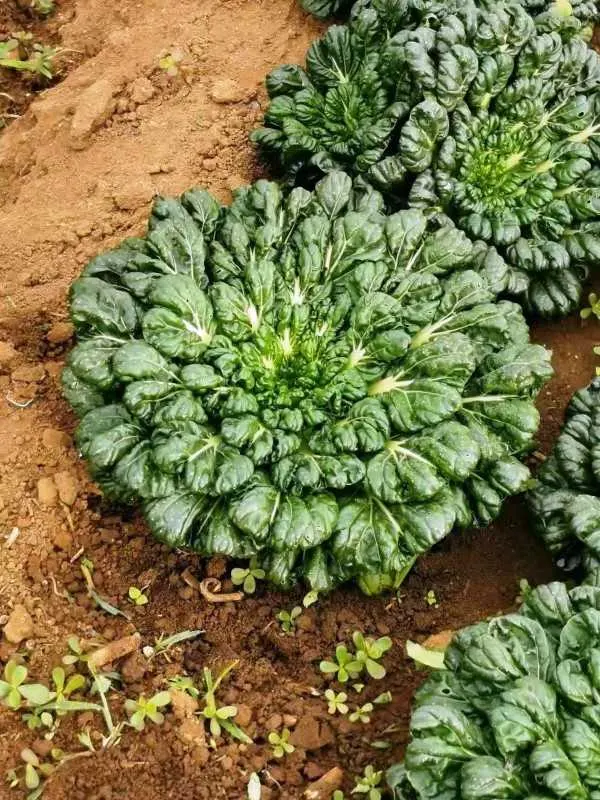
Tatsoi is a small undersized plant that forms a spoon-shaped rosette of small leaves. It has short pale green stems, juicy and tender, similar to celery stalks.
Likewise, the emerald green leaves are glossy and domed with fine veins. Raw Tatsoy exhibits a sweet yet nutty flavor and a mineral aftertaste. Once cooked, it takes on a warm earthy hue similar to spinach.
Tatsoi is a good source of vitamins A, C and K, carotenoids, folic acid, calcium and potassium. You can eat this vegetable raw or cook it, making it a great substitute for lettuce, spinach, or any greens in a salad.
It is best to steam or mix with other vegetables or the main dish when preparing this vegetable. It pairs well with other salad greens such as spinach, arugula, watercress, pea tendrils, and mizuna.
Its tangy and peppery notes pair well with citrusy, fresh cool ingredients like apple, fennel and mint, warm flavors found in abundance in chilli, garlic and allspice.
It combines with umami-rich ingredients like scallops, mushrooms, seaweed, sesame, and stew. Fermented ingredients like fish sauce, soy sauce and vinegar also complement each other.
2. Tiger nut
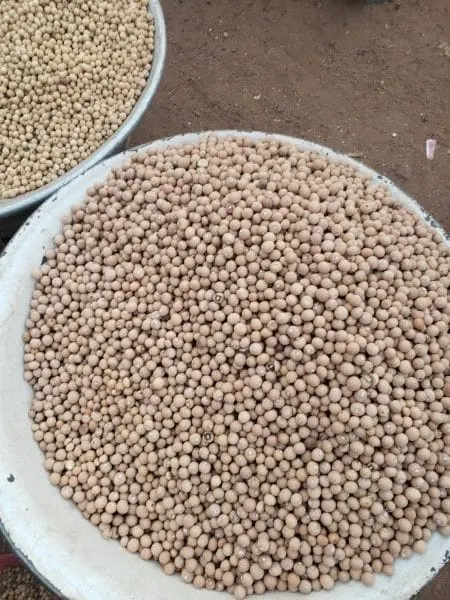
Tiger nut, also called ground almond, is an annual vegetable from the sedge family. The stems of this plant are thin and straight, the rhizome branched, and brown tubers are formed on it, small with similar to nuts.
Inside the tuber is a white nucleolus, which is very high in calories, contains a large amount of protein, fiber and sugar.
This type of vegetable is the most high-calorie among nuts. It exceeds almonds, hazelnuts, and walnuts. The sugar content is almost 30%, starch and oil more than 20%, and protein about 5%. This makes it taste sweet, which attracts cyprinids. Tiger nut can be used as a nozzle and bait to lure the fish.
Low-calorie content allows you to include this product in almost any diet.
The important thing is that it helps stimulate the intestines, which contributes to the removal of toxins and contains choleretic substances, so it is recommended to prevent gallstones.
It contains many vitamins and minerals that help strengthen the immune system and fight infections. Thanks to antifungal and antibacterial properties, the body is healthy and disease-free.
3. Tomatillo
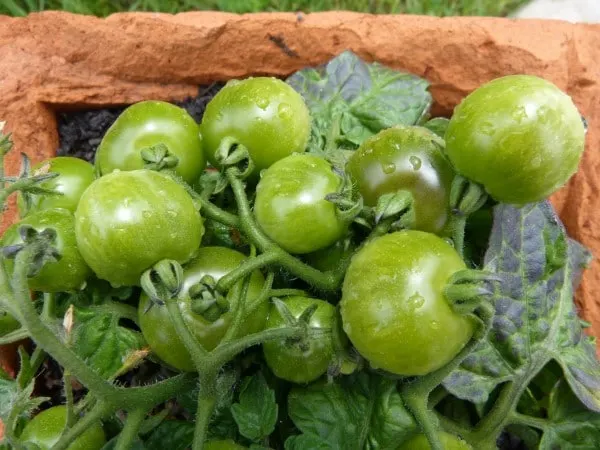
Tomatillo (vegetable physalis or Mexican tomato) is a heat-loving plant that practically does not tolerate frost. It can reach a height of 1.5-2 meters. Tomatillo is grown in many countries with a warm climates.
The amount of sugars in the vegetable is 15% more than raspberries and strawberries. This is a pectin plant; that is, it contains pectin. There are many organic acids in tomatillo, including ascorbic, folic, pantothenic, malic, citric, tartaric, and succinic.
There are elements like carotene, calcium, water, magnesium, potassium, sodium, phosphorus, zinc, selenium, iron. Also, you will get numerous vitamins like vitamin A (PE), provitamin A, vitamins thiamine, choline, riboflavin, pyrodoxine, tocopherol, steroids, and esters, among others.
Tomatillo fruits contain a balanced amount of organic acids, pectins, sugar, vitamin C and tannins for the human body. The content of phytoncides makes it a good antiseptic.
The vegetable contains antiseptic, hemostatic, anti-inflammatory, diuretic, choleretic, and analgesic substances. Fresh fruits and freshly squeezed juice are indicated for high blood pressure, respiratory diseases, and dermatosis.
Decoctions and infusions of these vegetables are taken for urolithiasis, hepatitis, cystitis, bronchitis, ascites and oedema, gout, rheumatism, and bruises. The tannins are contained to prevent the fermentation of the tomatillo, which is preserved for quite a long time.
4. Turmeric

Turmeric is a plant of a ginger family whose stems and rhizomes contain curcumin, which is a yellow dye. In India, from the 600s BC, turmeric was used to make curry powder.
Another name for turmeric is turmeric. The vegetable is loved for its rich bitter taste, color to dishes, and medicinal properties. Likewise, turmeric contains essential oils and many useful substances. These include vitamins C, K and B, iron, phosphorus, valleys, iodine, and calcium.
100 g of spice contains 2-7% food minerals, 3-7% essential oils, 6-8% protein, 60-70% carbohydrates, and 3-7% fat. Roots can be grated and added to food. They give a richer taste and aroma compared to the powder.
Turmeric help to relieve inflammation and pain, like osteoarthritis. This vegetable is absorbed poorly into bloodstream, so it is better to eat it with fatty foods.
The benefits of turmeric are enhanced with the right combination of spices. For instance, piperine contained in the black pepper considerably improves curcumin absorption.
It improves the function of the endothelium lining the walls of blood vessels. Curcumin, the main ingredient in turmeric, has a powerful antioxidant effect in the fight against harmful free radicals.
It helps to maintain the normal protective response of the immune system. Turmeric contributes to normal blood sugar and cholesterol levels and supports the optimal functioning of the joints.
5. Turnip
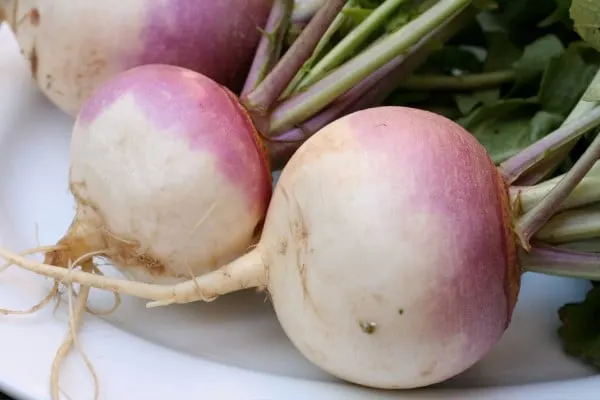
Turnip is an annual or biennial herbaceous plant of the cabbage family. It has been known in Russia since ancient times.
This vegetable is often present in both the rich and the poor meals, and the vitamins contained in it are saved from diseases and infections. Turnip varies in size from 8 to 20 cm, and weight can reach 10 kilograms.
It is rich in vitamins such as A, K, C, PP, and B. Of the nutrients, this vegetable contains carotene, fiber, potassium, calcium, magnesium, phosphorus, sulfur, iron, copper, iodine, sodium, and manganese.
For a fresh salad, turnip can be grated on a fine grater and add salt, pepper and a little vegetable oil to it.
A real Russian recipe is millet porridge with turnips. You can stuff turnip with porridge, or you can fry thinly sliced turnip slices in a pan, then add pre-cooked porridge to them and stew them together with a little more.
Also, you can add a handful of raisins to add a sweet smell to the dish. Raw turnips are slightly bitter, but this is easily eliminated by rinsing them with boiling water before cooking.
6. Thai basil
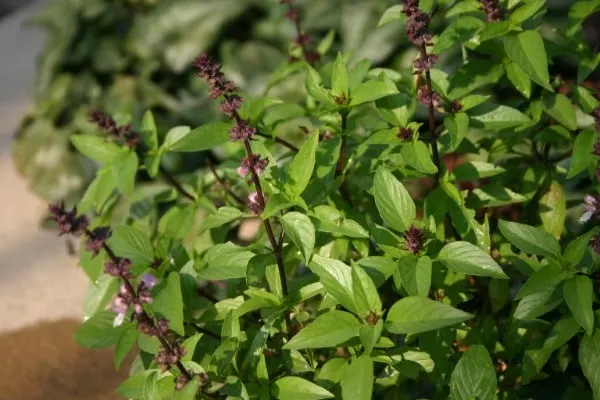
As one of the best vegetables that start with T, Thai basil is a rich source of vitamin A. This vitamin is essential for eye health and skin health. In addition, foods with this vitamin help protect the body from lung and mouth cancer.
Thai basil is also high in vitamin K, which the human body needs to maintain normal blood clotting and increase bone strength. And the content of vitamin C in Thai basil is quite high.
Both the Mediterranean and Thai versions of basil contain high amounts of iron, which the body needs to produce haemoglobin.
Similarly, Thai basil contains other minerals such as potassium, calcium, manganese and magnesium and is a good source of dietary fiber. Also, it contains various essential oils, including eugenol and limonene. These oils are antioxidants with antimicrobial properties.
In Ayurveda, basil oil is used to remedy bronchitis colds and antidote for poisonous bites. Essential basil oil has antiseptic, antispasmodic and mucolytic properties, stimulates digestion, and helps to improve metabolism and breakdown of fats.
A decoction of Thai basil eliminates bad breath, relieves joint pain and fatigue, and enhances brain activity. If you have a cold or the flu, try a strong basil tea with a little lemon juice, a little honey, a pinch of cinnamon, and cloves.
You will be surprised how quickly and pleasantly it has given the solution. And if you have a headache, you need to take some basil leaves and rub them into your temples. Thai basil can be used as a hair rinse and scalp tonic.
Conclusion
Having vegetables in your house guarantees you a balanced diet in every meal. These vegetables that start with T have a balanced macro- and microelement composition.
They contain iron, silicon, zinc, potassium, magnesium, manganese, calcium, phosphorus, and vitamins A, E, C, B1, and B2. These vegetables have a great effect on metabolism, for they activate the secretion of bile and pancreatic enzymes.
Eating them will help lower blood sugar levels, relieve inflammation in the stomach, intestines and joints, and improve skin condition. Likewise, they prevent constipation, lower cholesterol, reduce the risk of developing cholelithiasis, and prevent the formation of atherosclerotic plaques.
